Next, we added goats. The breeder who sold us the pigs said he’d have Kiko does for sale in January, but these are meat goats. We really wanted dairy breeds. I had met a local farmer some years earlier who had dairy goats, so I reached out to her again to see if she had any she would sell.
We were in luck! She had two does that were available – one was a pure Oberhasli and the other was part Kiko, part Oberhasli. Kikos are from New
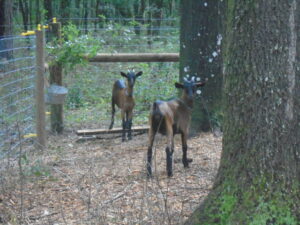
Zealand and were originally bred from the local goats and imported dairy bucks. They are a great goat for Florida because they are very parasite-resistant. Oberhaslis are a dairy breed from Switzerland that has good milk production and is usually easy-going. The Oberhaslis reminds me of deer in their coloring and movements.
Now, these two have been a little more work to deal with than our pigs. They were not so people-friendly to start with and were very scared of us. They thought we would eat them! Luckily
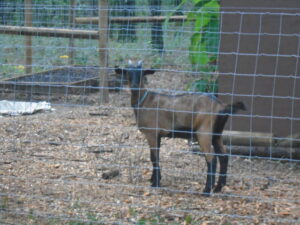
for them, that wasn’t our plan. But over the months we have had them, they have learned that we are friendly and give them food! Both we and the goats are happy about that!
Since we already had the shed for the pigs, and they were still small, we decided to house the goats in one half and the pigs in the other. This meant adding a dividing fence to the shed, cleaning out the pig poop from one side, putting fresh straw down and dusting with diatomaceous earth to kill parasites, and adding a water bowl and things to hold goat feed.
I went and visited the neighbor who had the goats to look at the does she wanted to sell and to ask her questions about their feed, minerals, vaccines
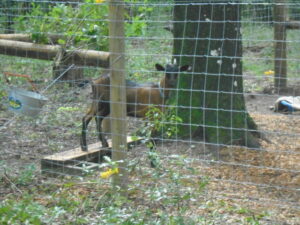
and deworming. She tested her goats to make sure they had no diseases and gave them a deworming before we picked them up. We got the same food they were used to eating and picked them up once both had been weaned from their moms. Per the goat information we had, we kept them in the shed for a while to get them used to us.
However, that really didn’t work too well. The younger one was trying to nurse the older one even though there was no milk. They were both pretty scared and not really calming down. I let them out of the shed to get more exercise and sunlight and that’s when we really started to see them do much better. Young goats typically have lots of energy, jumping, running, chasing and head butting. Our goats are close to being adults and still do all of that – they are great entertainment!
We call the smaller one Ms. B and the larger one Ms. G because we are fans of American football and live in the general vicinity of Tampa, Florida. Anyone familiar with these two things can figure out what the B and G stand for.
There are different viewpoints regarding keeping goats and pigs together. Some people who have KuneKune pigs say that it isn’t a problem. Other people told us not to keep goats and pigs together. While the goats and pigs were both young, it actually didn’t present a lot of problems. The goats did not want the pig food that was wet and the pigs could not reach the goat food in its buckets. Both sets of animals seemed to respect the other and their interactions were friendly.
As the pigs got bigger, things started to change. Thelma, the larger of our two pigs, would sneak into the goat side of the shed to get any food that fell out of the buckets. We put up a low fence on the goat side to keep her out, but she
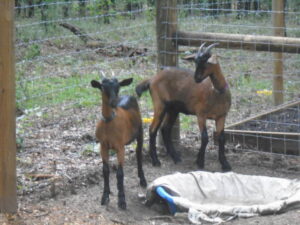
would just jump over it anytime she had a chance. It is really funny to see a big pig jump over a fence for some goat food! Then she started to bully the goats to take something they were eating, like leaves from branches.
The goats got their revenge by bullying the smaller pig, Louise. They would butt her with their heads to push her away if she was eating or got too close to them. I realized that the situation was not good and needed to change. We eventually gave the pigs their own space inside an electrified netting that has worked very well.
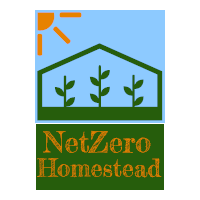
Yes! I love all the pictures! Keep it up!
Love, Alex
Thanks very much!